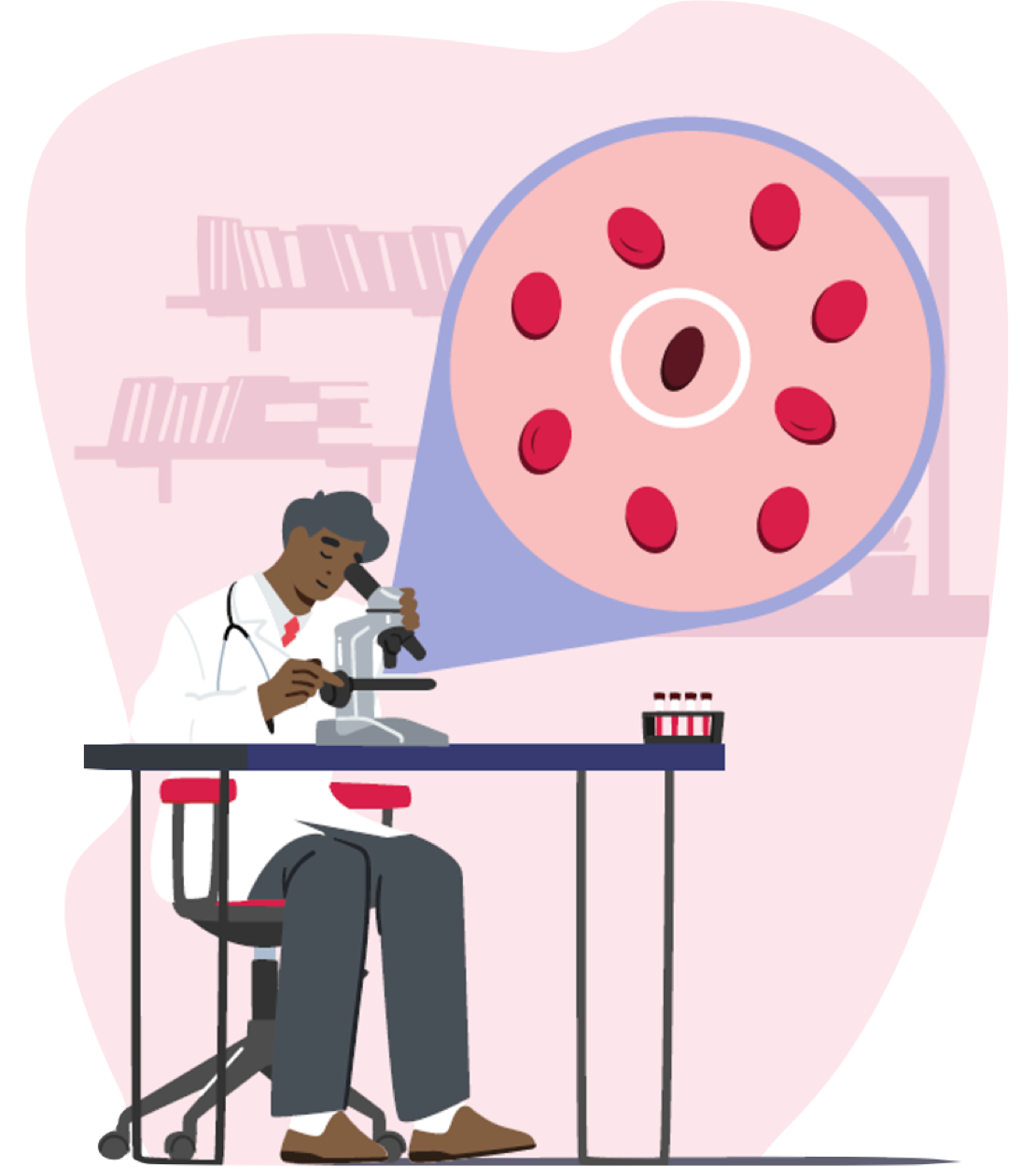Understanding Acute Myeloid Leukaemia
Acute Myeloid Leukaemia, also known as AML, is a type of blood cancer that can affect people of any age.1 Without treatment, it can progress very quickly.1
AML Explained
There is a soft inner part within our larger bones known as bone marrow. When it works correctly, bone marrow functions like an efficient blood factory—producing healthy red and white blood cells, and platelets.2
However, in people with leukaemia, this blood factory malfunctions. Instead of producing a healthy balance of cells, it makes too many faulty white blood cells that become cancerous and abnormal.1 These are also known as ‘leukaemic blasts’.3
Without treatment, this malfunctioning blood factory continues to produce these abnormal white blood cells, which can lead to a wide range of symptoms.4 The aim of treatment is to slow the production of abnormal white blood cells until they are no longer a concern to doctors.1
Need support understanding specific AML words and phrases? Our Terminology Explained document helps to break down some of the most common terms and phrases.

Read next

Diagnosis Process
Guidance for those with Acute Myeloid Leukaemia and their loved ones, with information on testing and how the cancer is diagnosed

Managing AML
Guidance on Acute Myeloid Leukaemia treatments, what to expect from treatment in hospital and at home, as well as information on transplants

Life with AML
Support for those living with Acute Myeloid Leukaemia and their loved ones, including tips on returning home, finding a new routine and managing feelings after treatment
References
1. Macmillan Cancer Support. Acute myeloid leukaemia (AML). https://www.macmillan.org.uk/cancer-information-and-support/leukaemia/acute-myeloid-leukaemia-aml [Last accessed: April 2022].
2. Cancer Research UK. What is acute myeloid leukaemia (AML)? https://www.cancerresearchuk.org/about-cancer/acute-myeloid-leukaemia-aml/about-acute-myeloid-leukaemia [Last accessed: April 2022].
3. Leukemia & Lymphoma Society. Acute Myeloid Lymphoma. https://www.lls.org/leukemia/acute-myeloid-leukemia [Last accessed: April 2022].
4. Blood Cancer UK. AML Symptoms and diagnosis. Available from: https://bloodcancer.org.uk/understanding-blood-cancer/leukaemia/acute-myeloid-leukaemia/aml-symptoms-diagnosis/ [Last accessed: April 2022]
HAE_2022_0003_IE | April 2022

